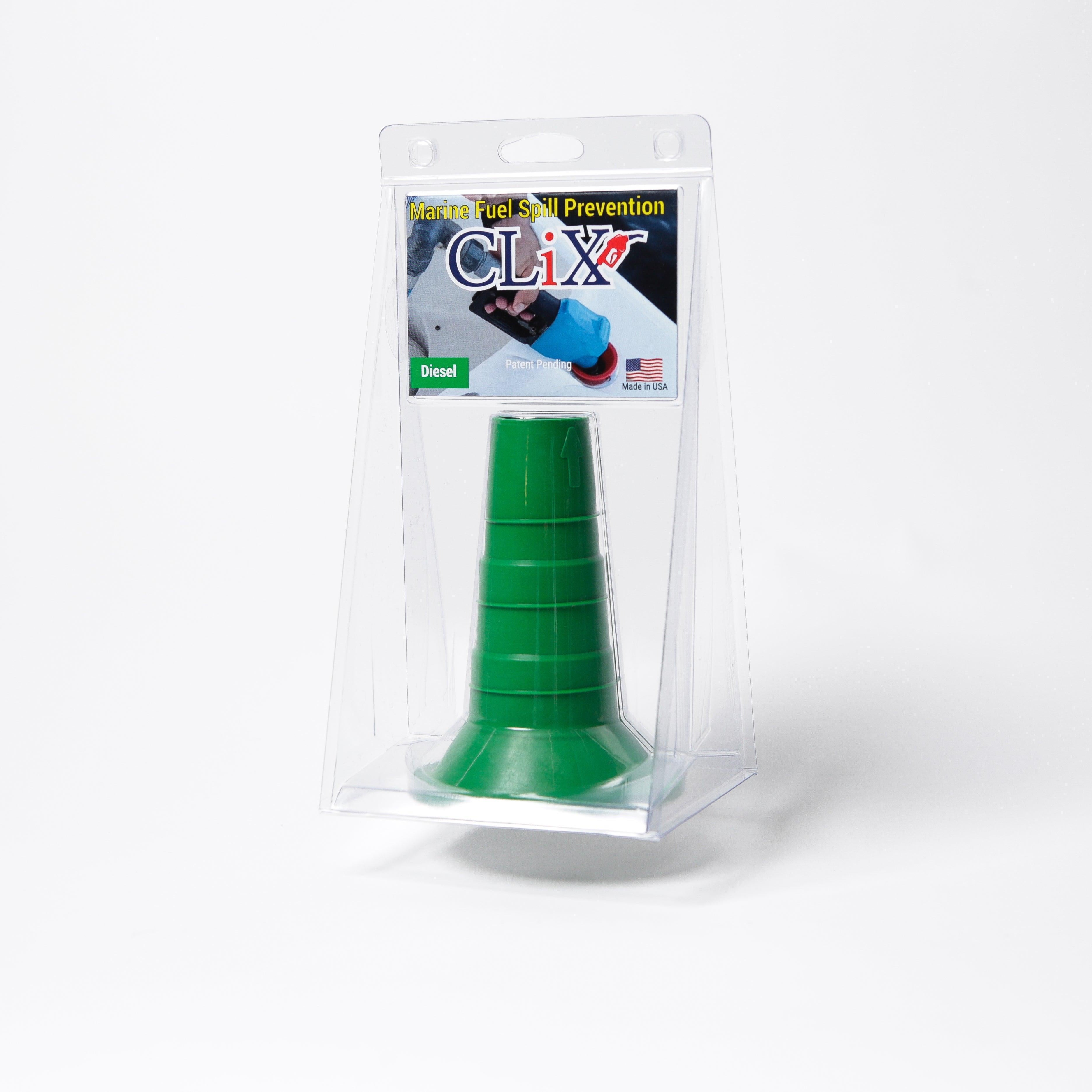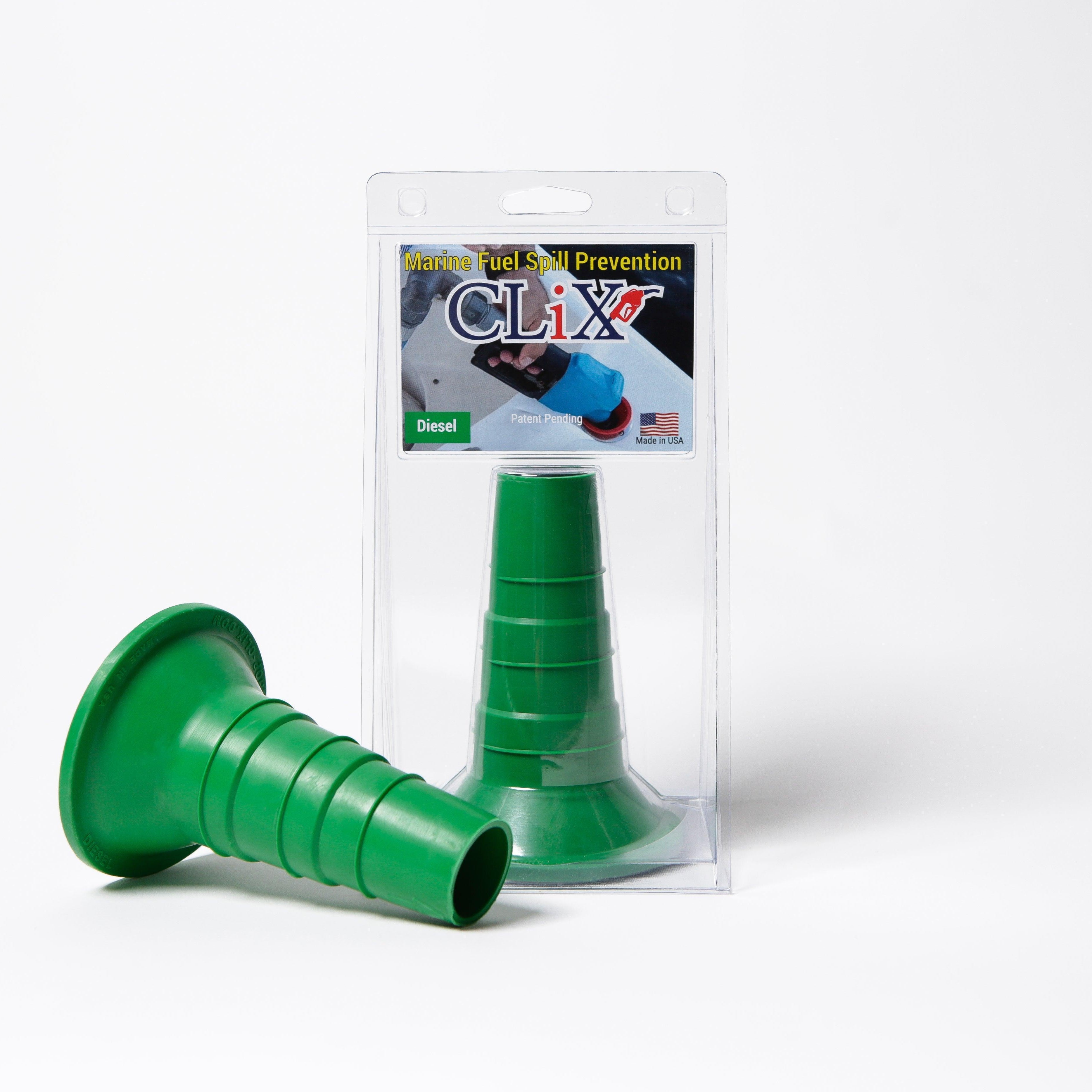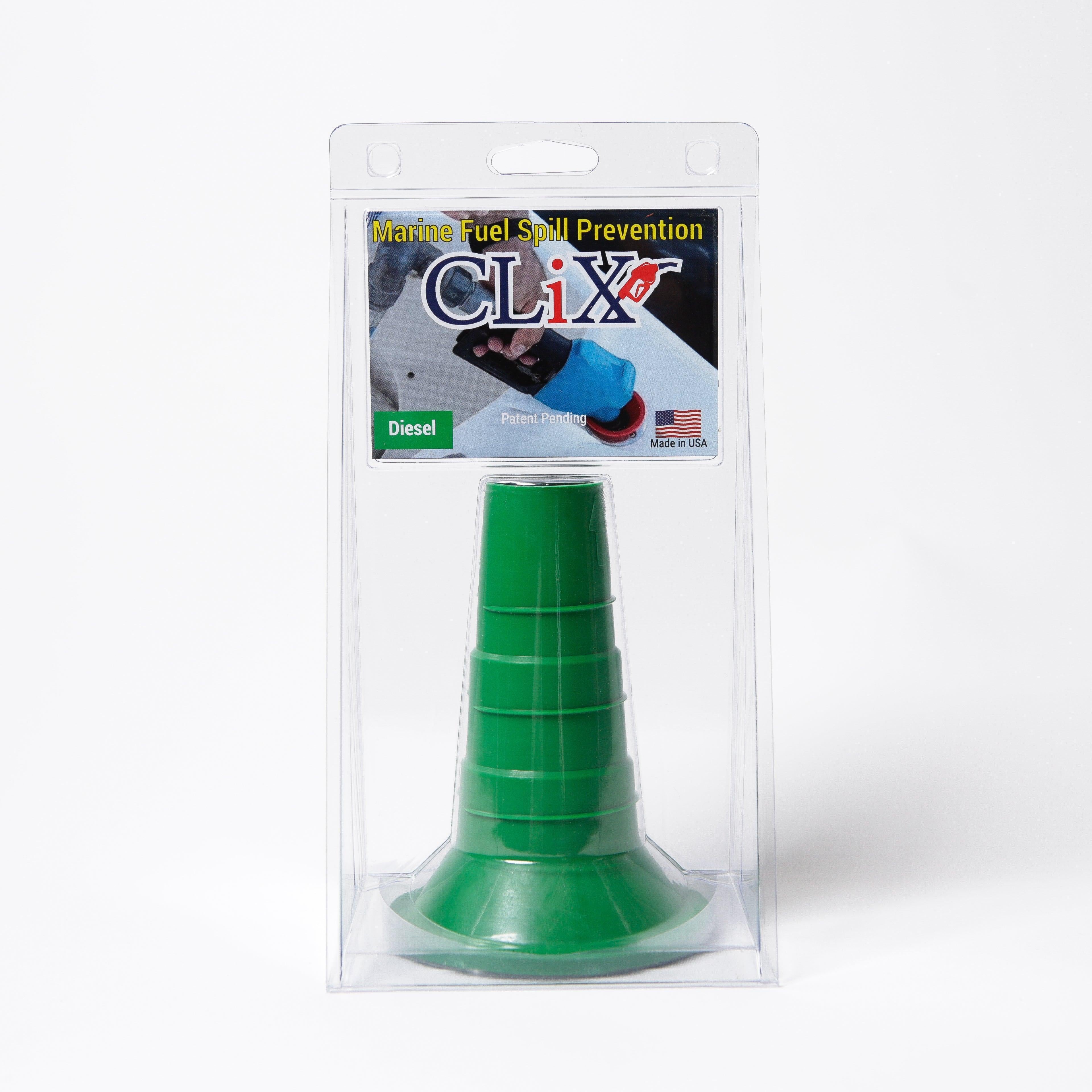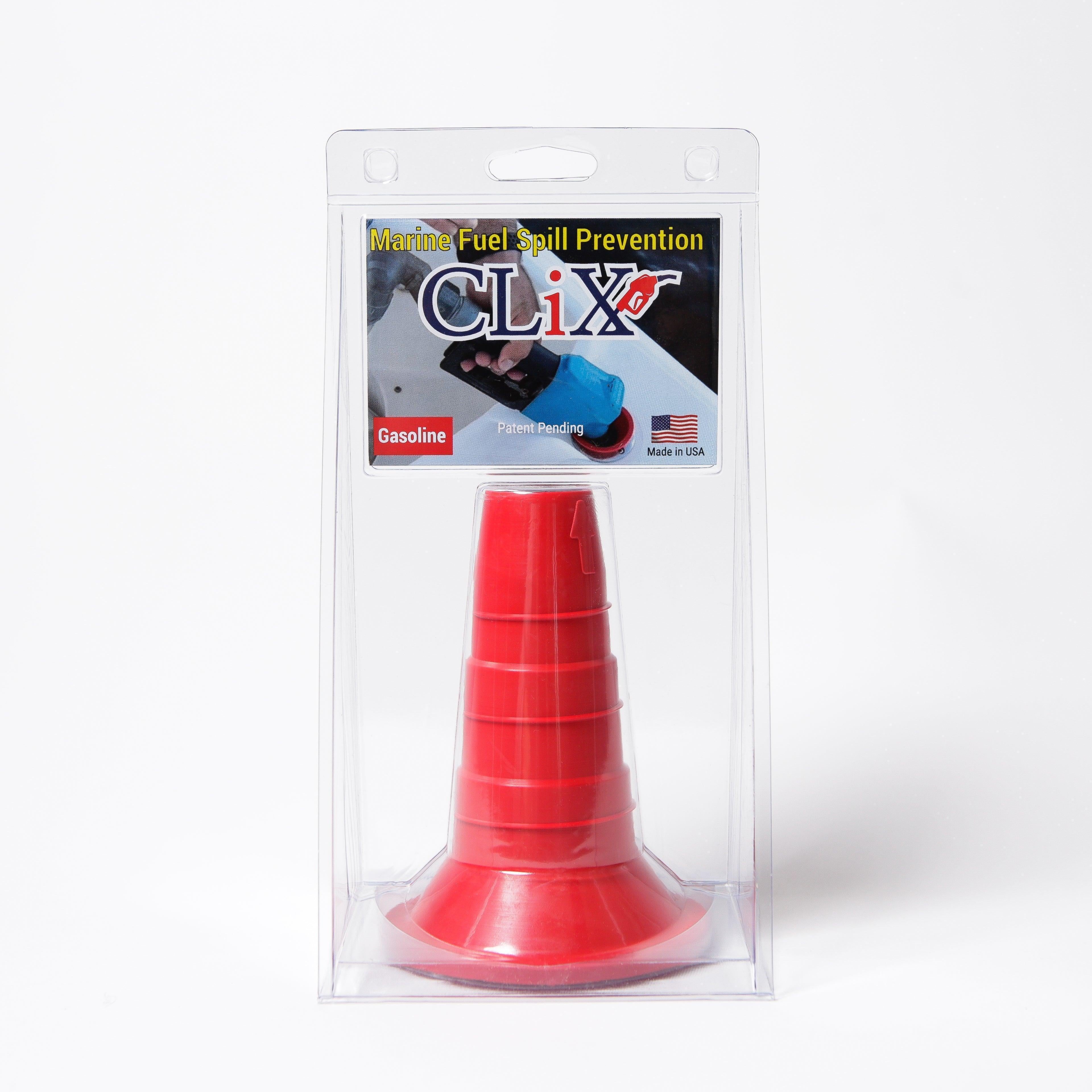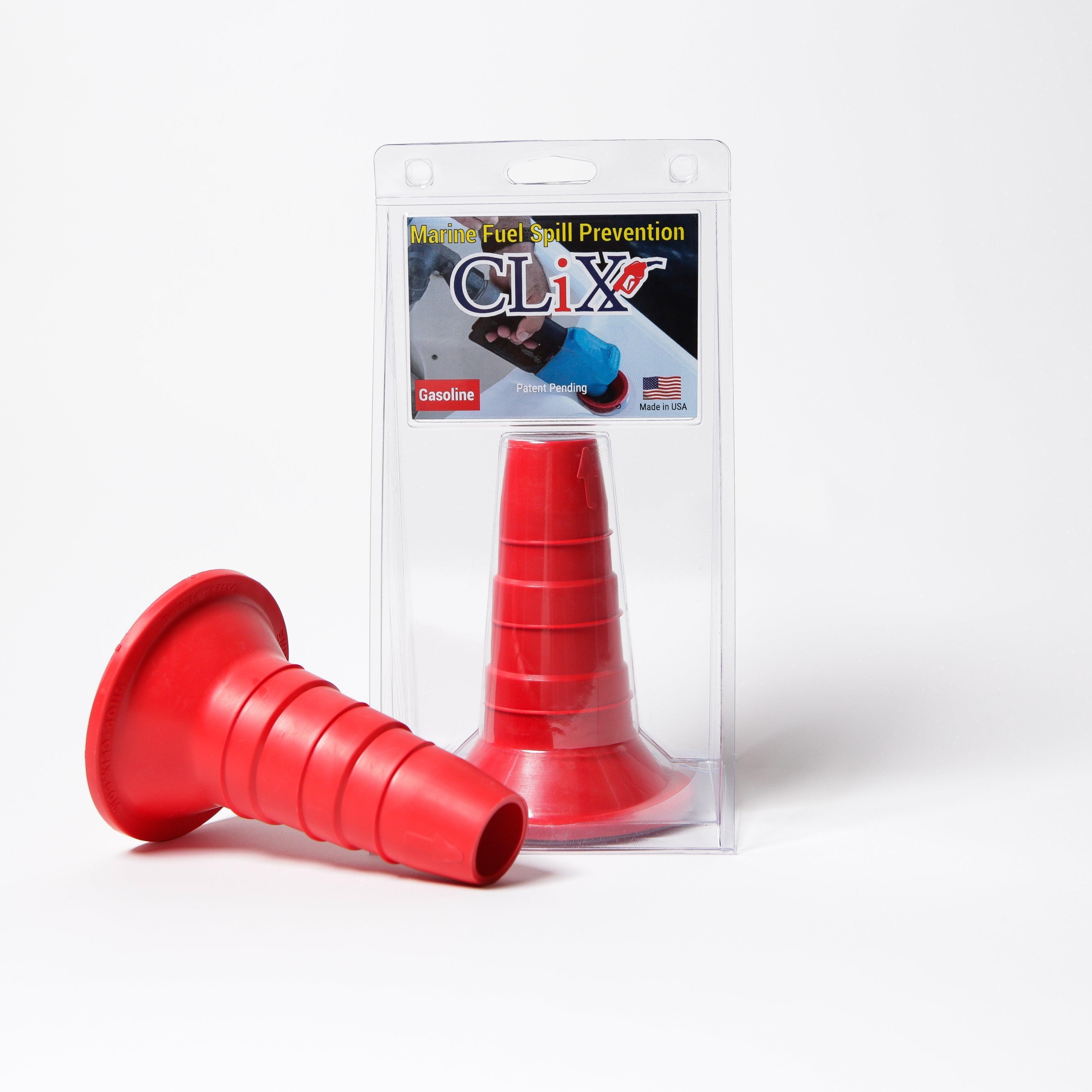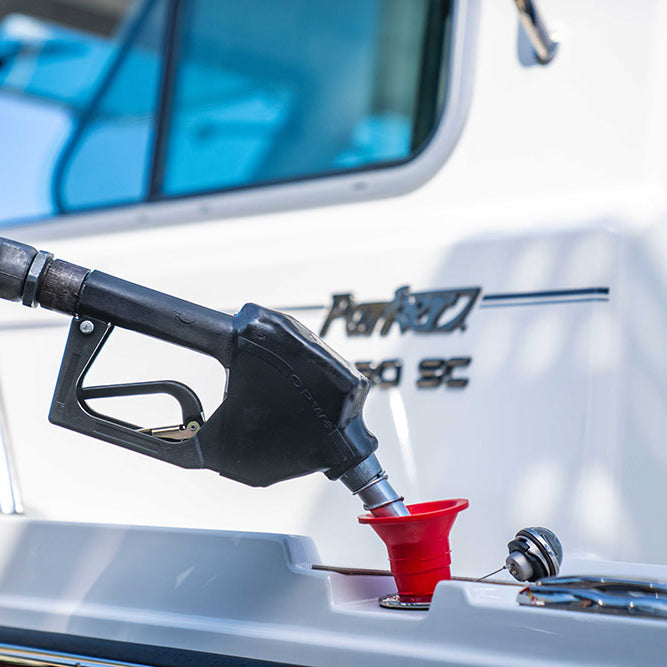Picking the right gas tank for your boat isn't just a minor detail—it's one of the most important choices you'll make. It directly affects how safe your boat is, how well it performs, and how far you can go. Think of it as the heart of your boat’s fuel system. The material, size, and even how it’s installed can be the difference between a perfect day on the water and one you’d rather forget.
Why Your Boat's Gas Tank Matters More Than You Think
A boat's gas tank is so much more than just a box that holds fuel. It’s a purpose-built piece of equipment designed to handle constant sloshing, a harsh saltwater environment, and the simple fact that gasoline is highly flammable. A cheap or poorly maintained tank can lead to serious trouble, from engine failure miles from shore to dangerous fuel leaks that create a massive fire risk.
You don't need to be a marine mechanic to understand the basics, but knowing your fuel system is a must for any boat owner. It helps you make smarter choices about maintenance, upgrades, and safety. A solid fuel system keeps your boat reliable and protects your investment, your crew, and the water you love.
The Core of Your Boating Experience
Your gas tank quietly has a hand in almost everything you do on the water. It sets your range, impacts how your boat handles in a chop, and is a huge part of your overall safety. Get it right, and you can focus on the fun instead of wondering what’s going on down in the bilge.
Here’s a quick look at where your fuel tank plays a starring role:
- Safety and Compliance: A tank that’s properly installed and vented is key to preventing the buildup of explosive fumes. It’s also required to meet strict U.S. Coast Guard (USCG) regulations.
- Vessel Performance: The tank's weight and where it’s placed can shift your boat's center of gravity, which changes how it cuts through waves and handles in tight turns.
- Engine Health: A clean tank sends clean fuel to your engine. A dirty one sends gunk that can clog filters and injectors, leading to some very expensive repairs.
- Environmental Responsibility: A good setup helps prevent spills at the fuel dock, which is critical for keeping our waterways clean.
A boat's fuel system is its circulatory system. Everything—the tank, lines, vents, and filters—has to work together perfectly for a safe and reliable trip.
This guide will walk you through everything you need to know. We’ll dive into the different types of tanks, compare materials like aluminum and polyethylene, and figure out how to choose the right size for your boat. By the end, you’ll have a new appreciation for this crucial component and the confidence to manage it like a pro.
For a complete look at staying safe at the pump, check out our guide on boat fueling safety—it’s the perfect playbook for every boater.
Choosing the Right Fuel Tank Material and Type
Picking the right gas tank for your boat comes down to two big decisions: do you need a permanent or a portable setup, and what material should it be made of? Think of it like choosing tires for your truck. What you haul, where you drive, and how big your rig is will all point you to the right choice. Get it right, and you're set for years of trouble-free boating.
The first fork in the road is deciding between a built-in tank and a carry-on portable one. This choice is almost always dictated by the size of your boat and how you use it.
Permanent vs. Portable Tanks
A permanent fuel tank, sometimes called an integral tank, is custom-fitted right into the boat's structure, usually tucked away below the deck. These are the standard for any vessel over 22 feet. They hold a lot of fuel, which is a must for longer trips or thirsty engines. Plus, their fixed position helps stabilize the boat's center of gravity, which makes for better handling in the water.
On the flip side, portable gas tanks are the workhorses for smaller boats—think jon boats, dinghies, and inflatables. They typically hold anywhere from three to twelve gallons. Their biggest perk is convenience; you can easily remove them to refuel at a gas station instead of dealing with a crowded marina dock. For a deeper dive into these handy tanks, check out our guide on the benefits of portable gas tanks for small boats.
This decision tree gives you a good visual of how your priorities—whether that's safety, performance, or just plain peace of mind—should guide you.

As the graphic shows, while all these factors matter, pinpointing what's most important to you will quickly narrow down the best tank for your boat.
Comparing Tank Materials
Once you know if you're going permanent or portable, it's time to pick a material. The big three in the boat world are polyethylene (plastic), aluminum, and fiberglass. Each one comes with its own set of trade-offs when it comes to durability, weight, and standing up to the harsh marine environment.
Polyethylene (Plastic) Tanks
High-density polyethylene, or HDPE, has pretty much taken over the market for both portable and many permanent tanks. And for good reason. Modern plastic tanks are incredibly tough, built without seams, and are completely immune to corrosion—a massive advantage, especially in saltwater. They're also lighter than metal tanks and, because they're often molded in one solid piece, they have fewer weak points where leaks could start.
The only real ghost in the closet for plastic tanks is permeation, where a tiny amount of fuel vapor can escape through the material itself. But don't worry, today's tanks are built with special barrier technologies to meet strict EPA standards, making this a non-issue for any new tank you'd buy.
Aluminum Tanks
For a long time, aluminum was the top dog for permanent fuel tanks, especially in bigger boats. It strikes a great balance of being lightweight yet strong, and builders can shape it to fit perfectly into all the odd nooks and crannies of a boat's hull. A well-installed aluminum tank can easily outlast the engine.
But aluminum has an Achilles' heel: corrosion.
Think of aluminum corrosion like rust on steel, but it's sneakier. It can happen in hidden spots, like where a bracket holds the tank or where it rests against a damp surface. This "crevice corrosion" slowly eats away at the metal from the outside. Water sitting inside the tank can cause "pitting corrosion," which is just as bad.
The key to a long life for an aluminum tank is proper installation. It needs to be isolated from certain types of wood and have plenty of airflow to keep it dry.
Fiberglass Tanks
You'll mainly find fiberglass tanks in older boats, especially from the 1960s and 70s. Back in the day, they were a good option because they were strong and could be molded right into the hull. The problem is, they have a serious vulnerability to modern ethanol-blended fuels. The ethanol in today's E10 gas acts like a solvent, slowly dissolving the resin that holds the fiberglass together. This turns into a sticky sludge that will wreck fuel filters and can lead to catastrophic engine failure. Because of this, you rarely see fiberglass used for new gasoline tanks anymore.
Making the Right Choice
To make things a little easier, here’s a quick side-by-side look at the two most popular materials for any new or replacement gas tank for boats.
Boat Gas Tank Material Comparison
When you're weighing your options, this table can help you see the key differences at a glance.
| Material | Durability | Corrosion Resistance | Average Cost | Best For |
|---|---|---|---|---|
| Polyethylene | Excellent impact resistance; seamless | Immune to corrosion | Low to Moderate | Smaller boats, portable tanks, and modern permanent installations |
| Aluminum | Very strong; can be custom-fabricated | Good, but vulnerable to crevice and pitting corrosion | Moderate to High | Mid-size to large vessels requiring custom shapes and high capacity |
At the end of the day, for most boaters, a high-quality, EPA-compliant polyethylene tank delivers the best all-around package of durability, safety, and value. But if you've got a larger boat that needs a custom fit, a properly installed aluminum tank is still a rock-solid choice.
How To Size Your Tank And Navigate Safety Rules
Choosing the right boat gas tank size is like packing for a hike—you need just enough fuel to reach your destination and return, without lugging around extra weight that saps performance and wastes fuel. It’s a balancing act: too little, and you risk being stranded; too much, and your vessel will feel sluggish.
The secret lies in calculating your longest likely voyage and tacking on a sensible buffer. That way, you sail with confidence, not nerves.
The Golden Rule Of Fuel Management
Divide your total fuel into three equal parts: one for the trip out, one for the return, and one as an emergency reserve.
Known as the Rule of Thirds, this simple strategy has kept mariners safe for decades. It’s more than advice—it’s a time-tested safety net when conditions shift unexpectedly.
- One-third To Get Out: Fuel allocated for the outbound leg.
- One-third To Get Back: The mirror image for your return.
- One-third In Reserve: An untouched cushion for emergencies.
That final third can mean the difference between a smooth ride home and a stressful scramble.
Calculating Your Perfect Tank Size
First, determine your boat’s fuel burn rate in gallons per hour (GPH) at cruising speed.
- Identify Your Longest Run: Say your favorite offshore spot is 2 hours away at 25 mph.
- Estimate Fuel Burn: At 10 GPH, you’ll consume 20 gallons for the outbound trip (2 hrs × 10 GPH).
-
Apply The Rule Of Thirds:
- Fuel Out: 20 gallons
- Fuel Back: 20 gallons
- Reserve: 20 gallons
Total Required Capacity: 60 gallons
In this scenario, a 60-gallon tank gives you the range you need plus a built-in safety margin.
Understanding Marine Safety Regulations
Sizing your tank is only half the battle. It must also comply with U.S. Coast Guard (USCG) laws and the American Boat and Yacht Council (ABYC) standards.
The USCG sets mandatory federal requirements, while ABYC issues voluntary best practices—both are critical for ensuring safety and securing insurance coverage.
Key rules cover:
- Durable Construction: Tanks must withstand pressure, shock, and vibration without leaking.
- Proper Labeling: Permanently installed tanks need a label showing manufacturer, capacity, material, and USCG compliance.
- Grounding: Metal tanks and fuel-fill fittings must be electrically grounded to prevent static sparks.
- Venting: Each tank requires a vent system for safe air intake and fume release.
When you’re ready to explore options, consult an ultimate buying guide for portable petrol tanks. It’ll help you compare materials, capacities, and safety features before deciding.
Understanding Proper Installation and Venting
Getting your boat’s gas tank installed correctly isn't just a good idea—it’s absolutely critical for safety. While you should always leave a full installation to a certified marine tech, every boat owner needs to know the basics. Why? Because this knowledge helps you spot trouble before it starts during your routine checks.
Think of it like this: a proper installation builds a fortress around your fuel. The whole point is to keep the tank completely isolated from anything that could cause a leak or a spark. That means locking it down so it can't shift in rough water, grounding it electrically, and making sure the fuel lines are routed well clear of any hazards.

Core Installation Principles
When it comes to a safe installation, you're really focusing on three things: securing the tank, grounding the system, and managing the fuel lines. Get these right, and you've prevented the lion's share of potential fuel-related disasters.
- Securing the Tank: Your tank needs to be held down tight with non-corrosive straps or brackets. These are usually cushioned with rubber to absorb vibration and shock. You also need to ensure there’s plenty of air circulation on all sides. Trapped moisture is the number one enemy of aluminum tanks, leading to corrosion.
- Electrical Grounding: Static electricity is the silent killer on a boat. Every metal part of the fuel system—the tank, the fill plate on the deck, even the nozzle—must be electrically bonded together and tied into the boat’s main ground. This tiny wire is what prevents a static spark from turning your refueling stop into a catastrophe.
- Safe Fuel Line Routing: Fuel hoses have to be routed carefully to avoid sharp bends, chafing, or kinking. Always use USCG-approved hoses (look for Type A1-15 or B1-15) and secure them with marine-grade clamps. This is non-negotiable for a leak-free system.
The Critical Role of Your Fuel Vent System
The fuel vent is easily one of the most overlooked parts of a boat's fuel system, but it’s one of the most important. Think of it as your tank’s lungs—it has to be able to breathe.
It’s just like shaking a can of soda; pressure builds up inside. The same thing happens in your fuel tank when it sits in the hot sun. The fuel expands and creates vapor pressure. Without a vent to let that pressure escape, your tank could literally swell, split a seam, or force fuel out wherever it can.
A fuel tank vent does two crucial jobs: it lets air in as the engine draws fuel out, and it lets air and expanding vapor out as temperatures change. A blocked vent can starve your engine for fuel or turn your tank into a dangerous pressure bomb.
This is exactly why a clogged or poorly installed vent is such a serious hazard. It can cause your engine to stall at the worst possible time or make fuel "burp" back out of the fill neck while you're fueling up, creating a dangerous spill. To really get a handle on this, check out our complete guide to mastering your boat's fuel tank vent.
Integrating Modern Spill Prevention
Today, there’s a massive focus on protecting our waterways, and that starts with preventing fuel spills. The entire marine fuel market—valued at $140.62 billion in 2025 and still growing—reflects this shift toward safer, more efficient fueling.
This is where modern spill-prevention devices come into play. A system like CLiX works with your boat's existing fuel setup to create an automatic shut-off, just like the one on the pump at a gas station. By creating a sealed connection between the fuel nozzle and your boat's fill neck, it stops the flow the second the tank is full.
This simple piece of tech prevents those messy, dangerous, and all-too-common overfills at the fuel dock. It not only protects your boat's finish but, more importantly, keeps fuel out of the water.
Solving Common Problems with Your Fuel Tank
Sooner or later, every boater deals with a fuel system headache. Even a perfectly maintained gas tank for boats will eventually throw you a curveball. The trick is knowing what to look for, so you can turn a trip-ending disaster into a simple fix. Getting ahead of these common issues doesn't just save you from a tow—it extends the life of your entire fuel system.
Most of the time, fuel tank troubles trace back to a few usual suspects: water in the fuel, a blocked vent that’s choking your engine, or a fuel gauge that’s flat-out lying to you. Let's walk through how to spot and sort out each one.
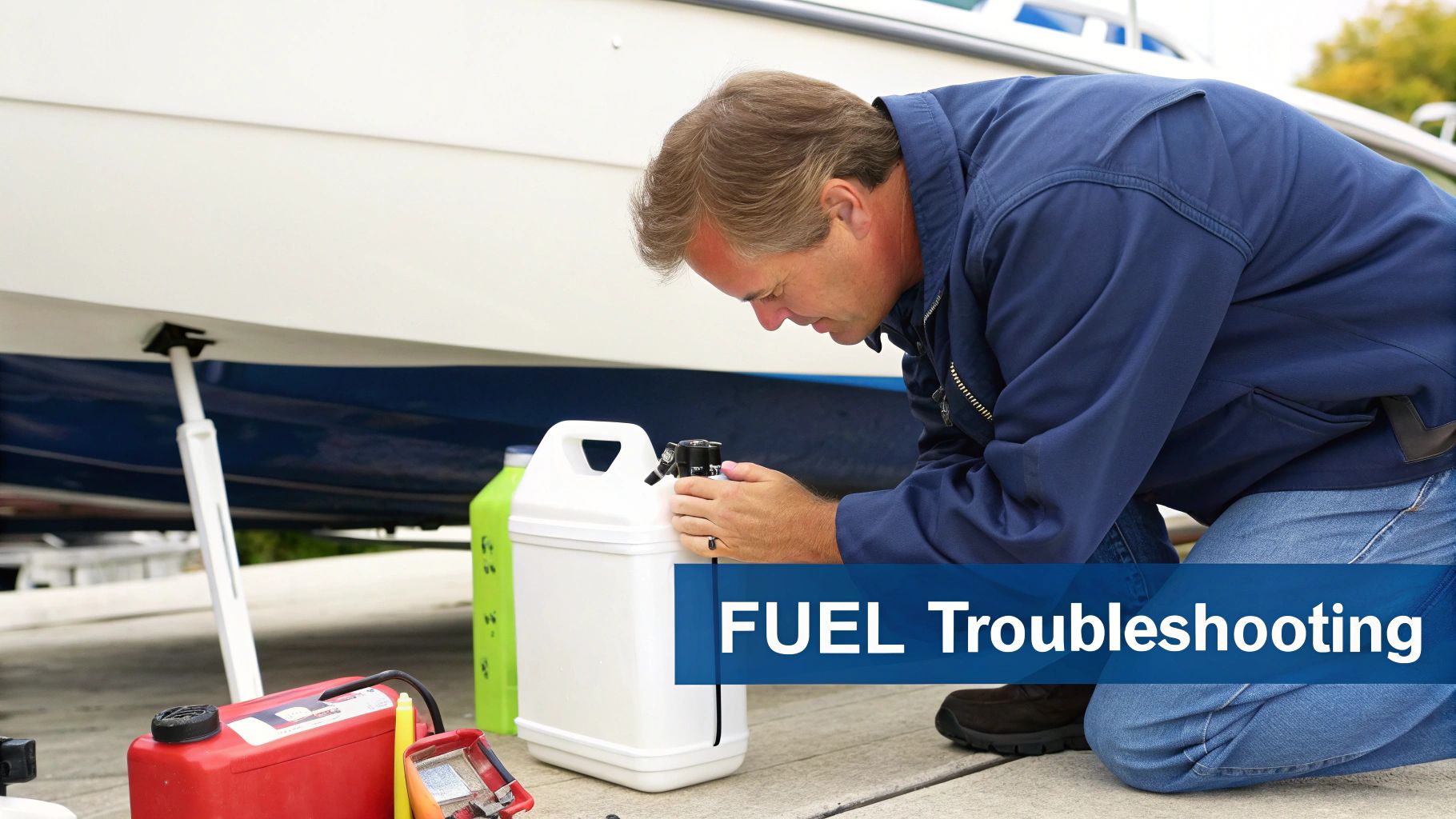
Dealing with Water in Your Fuel
Water in the fuel is probably the single most common—and destructive—problem you'll face. Sometimes it gets in through a bad seal on your deck fill, but more often than not, it’s condensation. The air in your tank heats up during the day and cools at night, causing moisture to form on the tank walls. Since water is heavier than gas, it sinks to the bottom and just sits there.
This becomes a much bigger issue with today's ethanol-blended fuels. Ethanol loves to absorb water, but it has a limit. Once it gets oversaturated, a nasty process called phase separation occurs. The water-ethanol mix separates from the gasoline and sinks, creating a corrosive gunk that wrecks fuel filters, injectors, and carburetors.
If your engine starts sputtering or you see milky-looking fuel, you've got water. Your first line of defense is a good water-separating fuel filter. If it's a serious contamination, though, the only real solution is to have the tank professionally pumped and cleaned.
Diagnosing a Clogged Fuel Vent
Here’s a sneaky one. A clogged fuel vent can act just like a dozen other engine problems. As your engine sips fuel from the tank, air needs to get in to replace it. If that vent line is blocked by a spider web, a mud dauber, or even just a kink in the hose, a vacuum starts to build inside the tank.
This vacuum can literally starve your engine of fuel. You'll notice it most when you're trying to get on plane or running at higher speeds—the engine will cough, sputter, and die. Another tell-tale sign is a loud whoosh of air rushing in when you open the fuel cap.
A quick trick to diagnose a blocked vent: The next time your engine acts up, carefully and slowly loosen the fuel cap. If the engine's performance instantly improves, you've found your culprit.
Make it a habit to check your vent fitting every so often. Just a quick glance to make sure it's clear of debris can save you a world of frustration on the water.
Why Your Fuel Gauge Is Lying
A fuel gauge you can't trust is more than just an inconvenience; it's a genuine safety hazard. Most of them work with a sending unit inside the tank that has a float on a swinging arm. It's a simple mechanism, but there are a few ways it can go wrong.
- Sender Failure: The sender unit itself is the most common point of failure. After years of sloshing around in fuel, it can corrode, get gunked up, or just wear out, causing the gauge to get stuck on "F," "E," or somewhere in between.
- Wiring Issues: This is a marine environment, after all. Corroded wires and loose connections between the sender and the gauge are incredibly common and can cause all sorts of bizarre and jumpy readings.
- Gauge Malfunction: It's less common, but the gauge on your dash can fail, too.
When troubleshooting, start with the easy stuff. Check all the wiring and connections for any obvious signs of corrosion. If that all looks good, odds are the sending unit itself has given up the ghost. Replacing it is usually the fix that gets you back to having a fuel gauge you can rely on—which is critical for following the "Rule of Thirds" and avoiding that embarrassing call for a tow.
Got Questions About Your Boat's Gas Tank? We've Got Answers.
When it comes to your boat's fuel system, a little knowledge goes a long way. Your gas tank is the heart of it all, and keeping it in top shape is non-negotiable for safety and a good day on the water. Let’s dive into some of the questions we hear most often from boat owners.
Think of this as a practical chat about what really matters—from routine checks to knowing when it's time for a major upgrade.
How Long Does a Boat Gas Tank Typically Last?
There’s no hard-and-fast expiration date for a boat gas tank, but its material tells you a lot about its potential lifespan.
An aluminum tank can have a great run, often lasting 10 to 15 years, sometimes even longer. But there's a catch: its survival depends entirely on how it was installed. If it's sitting in a spot where moisture can collect, especially in saltwater, hidden corrosion can eat away at it and slash its lifespan dramatically.
On the flip side, modern polyethylene (plastic) tanks are totally immune to corrosion. This is a huge advantage, giving them a typical lifespan of 20 years or more. While extreme sun exposure can make the plastic brittle over decades, they generally offer incredible durability and peace of mind.
What Are the Signs I Need to Replace My Fuel Tank?
A failing fuel tank will almost always give you a few warning signs before it quits completely. Your job is to know what to look—and smell—for. Catching a problem early can prevent a dangerous situation down the road.
Keep a sharp eye out for these red flags:
- That Lingering Smell of Fuel: If you catch a faint whiff of gas in the bilge or a locker that just won't go away, you likely have a slow leak. Don't ignore it.
- A Rainbow Sheen in the Bilge: Seeing that oily, rainbow-colored sheen on any water in your bilge is a dead giveaway. Fuel is getting out, and that’s a serious hazard needing immediate attention.
- Visible Damage: On a plastic tank, look for cracks, warping, or soft spots. For aluminum, check for white, chalky corrosion or any signs of pitting.
- Constantly Clogged Filters: If you're swapping out fuel filters way more often than you used to, it could mean the inside of your tank is breaking down and sending junk down the line.
Here's another tip: a busted fuel gauge can sometimes signal a bigger problem. The sending unit is often part of the tank assembly. If it fails and you can't get to it, replacing the whole tank might be the only practical way to get that crucial piece of information back.
Is It Safe to Repair a Leaking Boat Gas Tank?
Let's be crystal clear on this one: trying to repair a leaking boat gas tank is a bad idea. It's not just "not recommended"—it's downright dangerous.
The risk from explosive fuel vapors makes welding an aluminum tank, for example, a job for a highly specialized pro. It involves removing the tank, having it professionally purged of all fumes, and then performing the repair. It's a complex, expensive process.
What about those epoxy patches or sealants you see online? Think of them as a last-resort, get-you-back-to-the-dock emergency fix. They are not a permanent solution, they don't meet marine safety standards, and they will fail.
When you weigh the immense safety risks, replacement is almost always the safest, most reliable, and ultimately the most cost-effective choice for a leaking tank.
Should I Use Ethanol Blended Fuel in My Boat?
This is a hot topic at every marina. While you can use ethanol-blended fuel (like the E10 you find everywhere on the road), you need to be really careful.
Ethanol's biggest enemy on a boat is water. It's "hygroscopic," which is a fancy way of saying it loves to absorb moisture right out of the air. This can lead to a nasty problem called "phase separation," where the water-ethanol mix separates from the gas and sinks to the bottom of your tank. That sludge is a one-way ticket to engine damage.
Worse, ethanol can act like a solvent, slowly destroying older rubber fuel lines and, most critically, the fiberglass tanks found in many boats built before the 1980s.
For these reasons, non-ethanol marine gasoline is always the best choice for your boat. If you have no other option but to use E10, make sure you have a high-quality water-separating fuel filter installed. It’s essential protection for your engine and your entire fuel system.
At CLiX Fueling Solutions, we believe fueling your boat should be simple, clean, and safe. Our spill-proof fueling system is engineered to work with your boat's current setup, preventing messy overflows that harm our waterways. Make every trip to the fuel dock a clean one. Learn more about how CLiX works.

